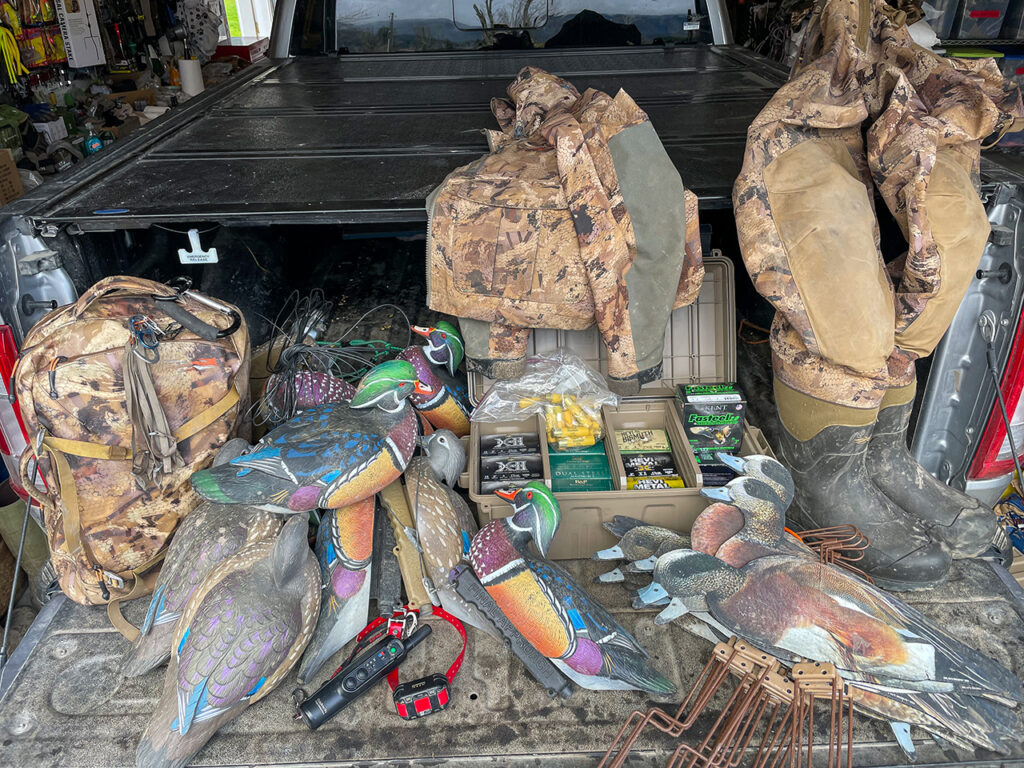Waterfowl season is over, but the to-do list is far from finished. Now is the time to focus on post-waterfowl season gear care to ensure the top-end gear you depend on will last for many seasons.
by Scott Haugen
It’s the most depressing day of the year. We tell ourselves we’re ready for a break. After three months of getting up early, going to bed late, and feeling the grind, we almost want the season to end. At least, that’s what we tell ourselves. But when duck season is truly over, we immediately miss it.
After a few days of sulking, I rebound. I reflect on the season, start looking forward to the next season, and then move into post-season gear care mode.
Clothes
It begins with the clothes. Waterfowl hunting clothes have come a long way since I started this addicting pastime nearly 50 years ago. Protect your high-quality hunting clothes so you can get more seasons out of them. Make sure to wash all the underlayers and store them in a dry place. I have some hanging in a closet in the shop and some stored in plastic bins.
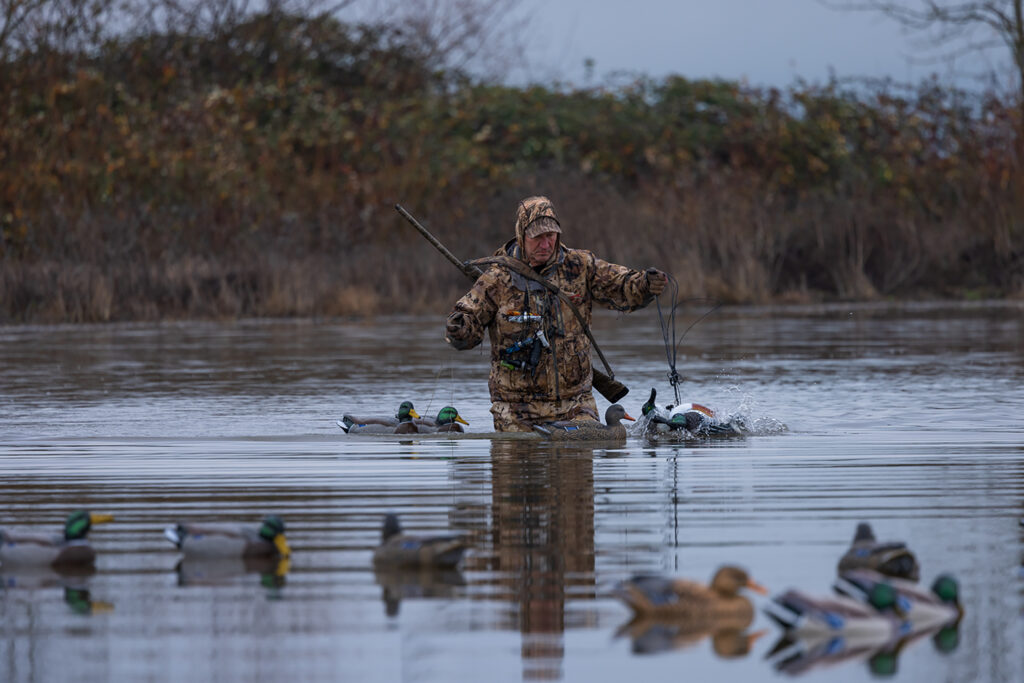
I scrub down waders, bibs, jackets, and rain gear with hot, soapy water. Next, I thoroughly rinse them and let them air dry before storing them. Sunny days are best for this because decoys will dry quickly. I hang my waders and rain jackets, never folding them. I don’t want creases forming that may break the material down and result in a hole forming early next hunting season.
Decoys
All of my decoys get a bath. Every single one of them. With floating decoys, I want to get rid of all the mud and dirt. My goal is to have them shine like new, making me smile just like I did when I pulled them from the box for the first time. If decoys need touch-up paint jobs, I’ll do it now or make a pile that I will tend to later in the summer.
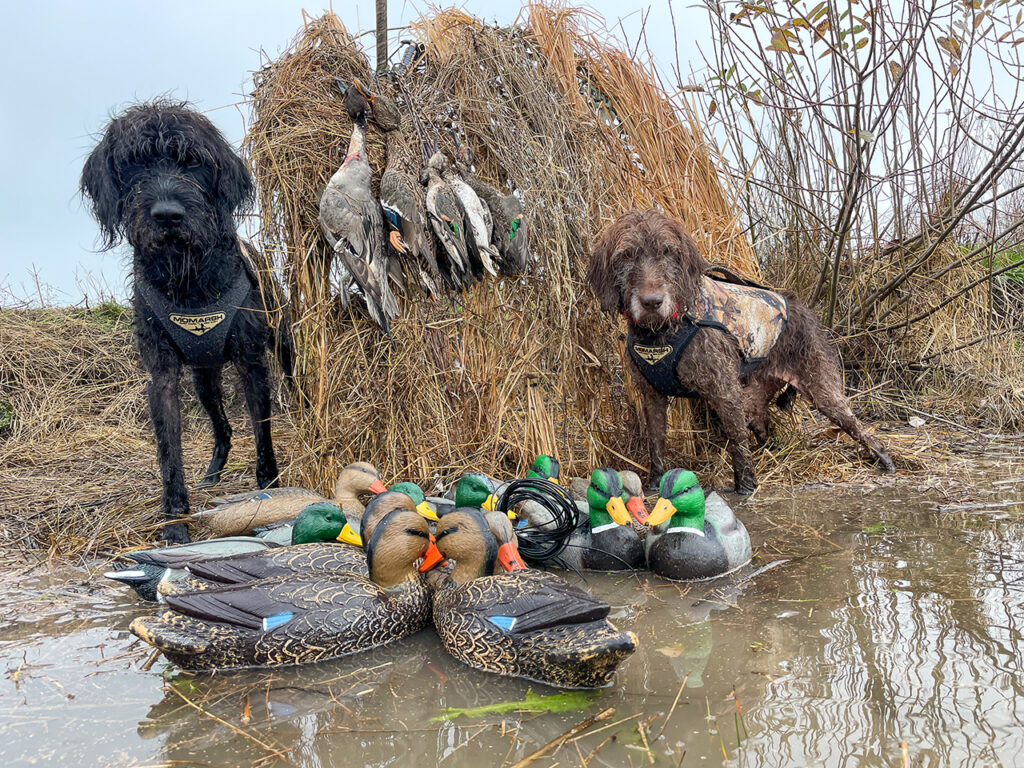
I have a couple of private land waterfowl haunts, and at these locations, I leave my decoys in the water all year. When picking up these decoys, I wash them on the spot. I take a five-gallon container of hot water, dish soap, a small bucket, and scrub brushes and work diligently to get the algae off the bottom and sides of every decoy.
In the past, I’ve let decoys like this go. I found that as they dried and sat all summer, the algae hardened and broke down the edges of the decoys. This created splits and holes I didn’t discover until the following season, and it created a lot of extra repair work when I should have been focused on hunting.
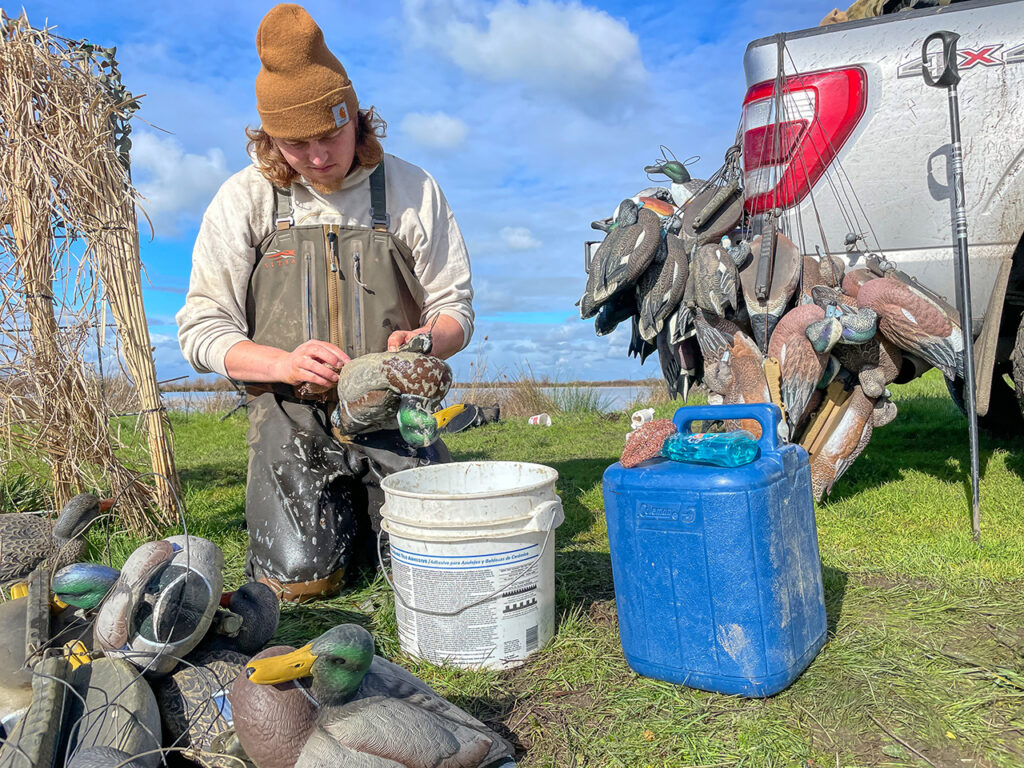
As for silhouette decoys, I take them all home and wash each one with hot, soapy water. I then stick them in the ground to air dry. Be sure to tap them on the ground a few times so water escapes from all the holes. I’ll do this several times throughout the day so they’re totally dry before I round them up for storage.

Store all decoys in a cool, dry place. I store all my decoys inside decoy bags outside, on the shaded side of a covered shop. I hang them from rafters so they remain dust-free and out of direct sunlight. Plus, I have a lot of floater decoys hanging in my shop, too. Avoid storing decoys in an attic that gets hot in the summer, as the intense heat can compromise the shape and color of the decoys, especially silhouettes.
If you need to replace any stakes on your silhouette decoys, now’s the time. The same goes for replacing decoy lines on floaters and anything that needs fixing on jerk cord decoys, whether wing or floating rigs. Look closely at rubber bands, shock cords, screws, and other parts on these moving decoy setups to make sure all is in good condition for next season.
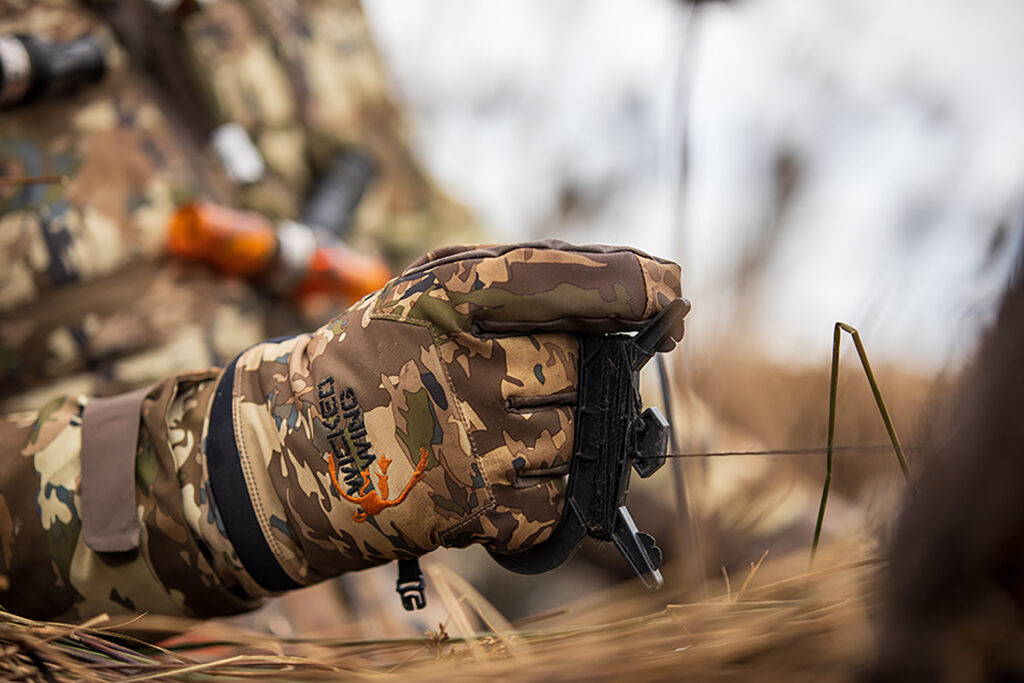
Shotshells & More
You’ll likely run across loose shotgun shells when cleaning your waders and jackets. You probably found more shells and other hunting accessories in your blind bag. Now is the time to clean and organize all of it. I box up all my shells, storing them by gauge, brand, and loads. Discard rusty shells; they’ll be in worse shape by next season.

Organize accessories like carabiners, clips, and straps so you know what you have and need for next year. Clean blind bags and packs, too. I give mine a complete washing, making sure to get all the hard dirt out of every zipper, buckle, and seam so it doesn’t harden and cause a malfunction next season. Be sure to remove everything from all pockets and compartments.
Calls
This is an excellent time to clean your calls, too. I remove all the guts, wipe them down with a dry, clean cloth, and store them in a bin in the shop. On my acrylic calls, I either remove the guts or lightly insert them into each call, then store them, as they can expand in the summer. I’ve forgotten to do this more than once, only to discover the calls had expanded and broke, rendering them needing replacement parts.
Shotguns
Be sure to completely break down your shotgun and clean it from top to bottom. If you’re uncomfortable doing this, take it to a gunsmith and have it cleaned and prepared for long-term storage. I recommend learning to do it yourself, as it will teach you a lot about how your gun operates and prepare you to handle situations should you take it apart in the field to remedy a problem.
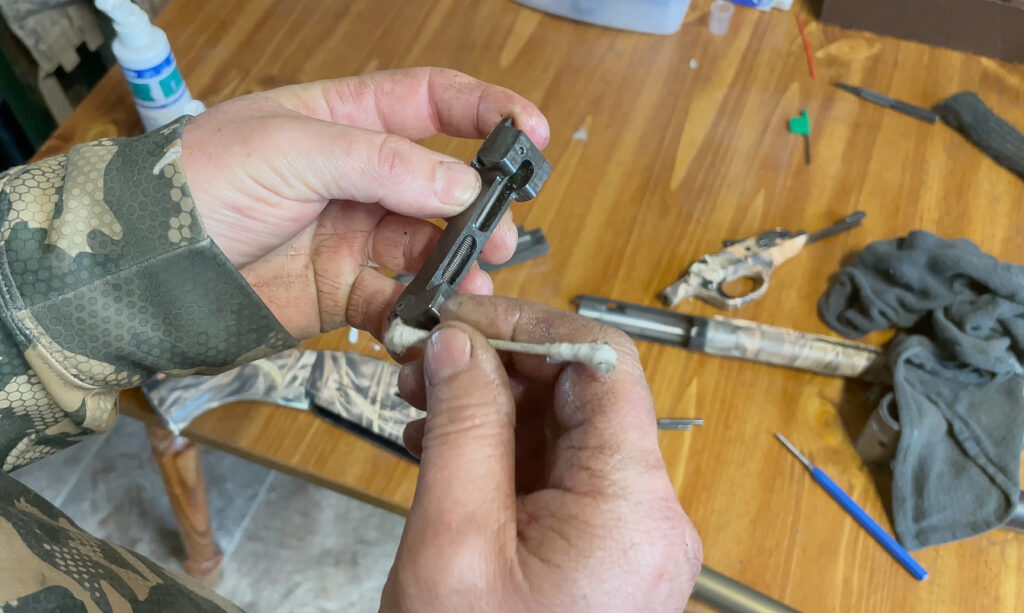
Remove the barrel, trigger assembly, bolt, plug, magazine spring, even the butt pad, and clean all parts. I give everything a complete rinse in hot tap water, let it dry, and then go over it with a degreasing spray using a brush and cotton swabs to reach everywhere. Use a bore cleaner and patch on the barrel. Once the gun and all parts are completely dry, apply a light coat of oil/lubricant to the bolt, receiver, and action. When all parts are clean, I go over everything again with a dry cloth. Then, I reassemble and store my shotguns in a locked gun safe.
Dog Gear
Now is also when I go over all my dog gear. Vests are cleaned and inspected for repairs or replaced. Collars, nodes on electronic receivers, and remote controls get a once-over, too. Last season, I had a remote control go bad during a duck hunt. Three of us were hunting, and there was a lot of action. It was a cold, rainy, windy day when the remote gave out, making for one of the most frustrating days I’d ever had hunting with my dogs because I could not communicate with them on long-distance retrieves. Fortunately, I had another remote control at home, which was nice because we were hunting the next day. I replaced the lousy remote fast, as I always try to have a backup.
Trail Cameras
I run many trail cameras for ducks. After the season, I gather and clean them. But I’ll be putting them out in a couple of months, monitoring local duck and goose nesting success. This also gives me an idea of what predators are in the area.
Cleaning and taking good care of our hunting gear not only prolongs its longevity, but it’s also a fun way to reflect on another waterfowl season gone by. It’s also a good time to note what you need to get for next season. That way when opening day rolls around, you’re ready to go.
Note: Check out Scott Haugen’s Instagram page for trail camera video clips of ducks in action.
